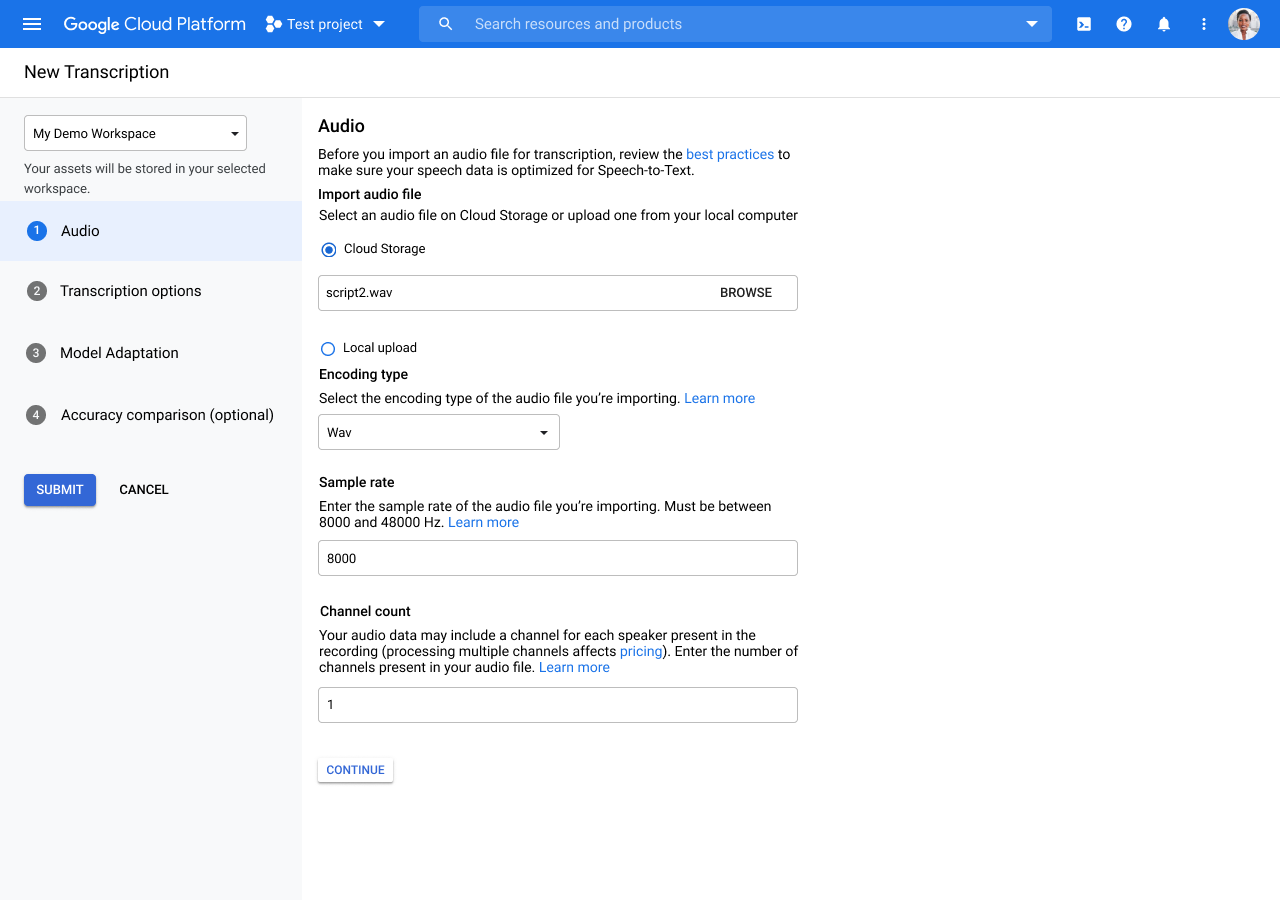
Google Cloud Text-to-Speech: Complete Buyer's Guide
Enterprise-grade AI voice synthesis platform
Google Cloud Text-to-Speech positions itself as the enterprise-grade AI voice synthesis platform for organizations requiring secure, scalable voice generation with multilingual capabilities and API-first deployment architecture. Built on DeepMind's WaveNet research, the platform delivers 380+ voices across 50+ languages with human-like intonation designed for integration with existing martech stacks[110][126].
Market Position & Maturity
Market Standing
Google Cloud Text-to-Speech operates within the enterprise TTS market dominated by Google, Amazon, and Microsoft, which collectively control 42% of enterprise market share through cloud integrations[3][7].
Company Maturity
The platform benefits from Google's substantial AI research investment, particularly through DeepMind's WaveNet technology that provides the technical foundation for enhanced voice quality[110][126].
Growth Trajectory
Enterprise adoption patterns show Google Cloud Text-to-Speech gaining traction among organizations already utilizing Google Cloud Platform services, where integration complexity decreases significantly.
Industry Recognition
The platform's enterprise security frameworks and compliance certifications exceed many specialized voice generation vendors, critical for regulated industries requiring SOC 2, GDPR, and data residency compliance[112].
Strategic Partnerships
Google Cloud Text-to-Speech leverages the broader Google Cloud Platform ecosystem, providing integrated voice synthesis capabilities alongside other AI and cloud services.
Longevity Assessment
Long-term viability appears strong given Google's commitment to AI research and cloud platform development. The platform represents a strategic component of Google's broader enterprise AI portfolio.
Proof of Capabilities
Customer Evidence
LogMeIn (GoToMeeting) automated meeting transcripts using TTS integration, achieving substantial annual savings in transcription services while improving accessibility for hearing-impaired participants[139].
Quantified Outcomes
Customer reports of 75% voiceover budget reductions for explainer video production, with multilingual campaign implementations showing cost savings of 60-80% versus human voice actors[9][121].
Case Study Analysis
Guardforce AI created unique synthetic voices for service robots using Custom Voice functionality, reducing localization costs across Thailand and Malaysia markets while maintaining brand consistency[140].
Market Validation
Josh Talks reported significant app latency improvements through Firebase and TTS integration, with 30% user retention increases attributed to millisecond response times[136].
Competitive Wins
Voximplant processed substantial monthly voice minutes for client call centers using the platform's TTS and Dialogflow integration, reporting significant reductions in IVR setup time[138].
Reference Customers
Columbia University's Nagish App implementation demonstrated reduced communication barriers for speech/hearing-impaired users through real-time text-to-speech conversion, winning recognition for social impact[118].
AI Technology
Google Cloud Text-to-Speech's technical foundation centers on three distinct voice technologies. WaveNet voices, built on DeepMind's neural network research, provide 90+ voice options with enhanced naturalness compared to standard text-to-speech approaches[110][126].
Architecture
API-first architecture enables seamless integration with existing martech stacks, supporting RESTful API calls with JSON responses for programmatic voice generation[116].
Primary Competitors
Google Cloud Text-to-Speech competes within the enterprise TTS market dominated by Google, Amazon, and Microsoft[3][7].
Competitive Advantages
Integration with Google Cloud Platform ecosystem providing seamless connectivity, security frameworks and compliance certifications exceeding many specialized voice generation vendors, and multilingual capabilities spanning 380+ voices across 50+ languages[110][112][126].
Market Positioning
The platform's technical requirements create barriers for marketing teams lacking dedicated development resources, contrasting with user-friendly alternatives designed for creative professionals.
Win/Loss Scenarios
Google Cloud Text-to-Speech wins when enterprise infrastructure, security compliance, and multilingual scalability outweigh creative workflow convenience. The platform loses to alternatives when organizations prioritize voice quality realism (ElevenLabs), user-friendly creative workflows (Murf), or cost-conscious deployment (Speechelo)[14][15].
Key Features

Pros & Cons
Use Cases
Integrations
Pricing
Featured In Articles
Comprehensive analysis of AI Voiceover Tools for AI Marketing & Advertising for AI Marketing & Advertising professionals. Expert evaluation of features, pricing, and implementation.
How We Researched This Guide
About This Guide: This comprehensive analysis is based on extensive competitive intelligence and real-world implementation data from leading AI vendors. StayModern updates this guide quarterly to reflect market developments and vendor performance changes.
141+ verified sources per analysis including official documentation, customer reviews, analyst reports, and industry publications.
- • Vendor documentation & whitepapers
- • Customer testimonials & case studies
- • Third-party analyst assessments
- • Industry benchmarking reports
Standardized assessment framework across 8 key dimensions for objective comparison.
- • Technology capabilities & architecture
- • Market position & customer evidence
- • Implementation experience & support
- • Pricing value & competitive position
Research is refreshed every 90 days to capture market changes and new vendor capabilities.
- • New product releases & features
- • Market positioning changes
- • Customer feedback integration
- • Competitive landscape shifts
Every claim is source-linked with direct citations to original materials for verification.
- • Clickable citation links
- • Original source attribution
- • Date stamps for currency
- • Quality score validation
Analysis follows systematic research protocols with consistent evaluation frameworks.
- • Standardized assessment criteria
- • Multi-source verification process
- • Consistent evaluation methodology
- • Quality assurance protocols
Buyer-focused analysis with transparent methodology and factual accuracy commitment.
- • Objective comparative analysis
- • Transparent research methodology
- • Factual accuracy commitment
- • Continuous quality improvement
Quality Commitment: If you find any inaccuracies in our analysis on this page, please contact us at research@staymodern.ai. We're committed to maintaining the highest standards of research integrity and will investigate and correct any issues promptly.